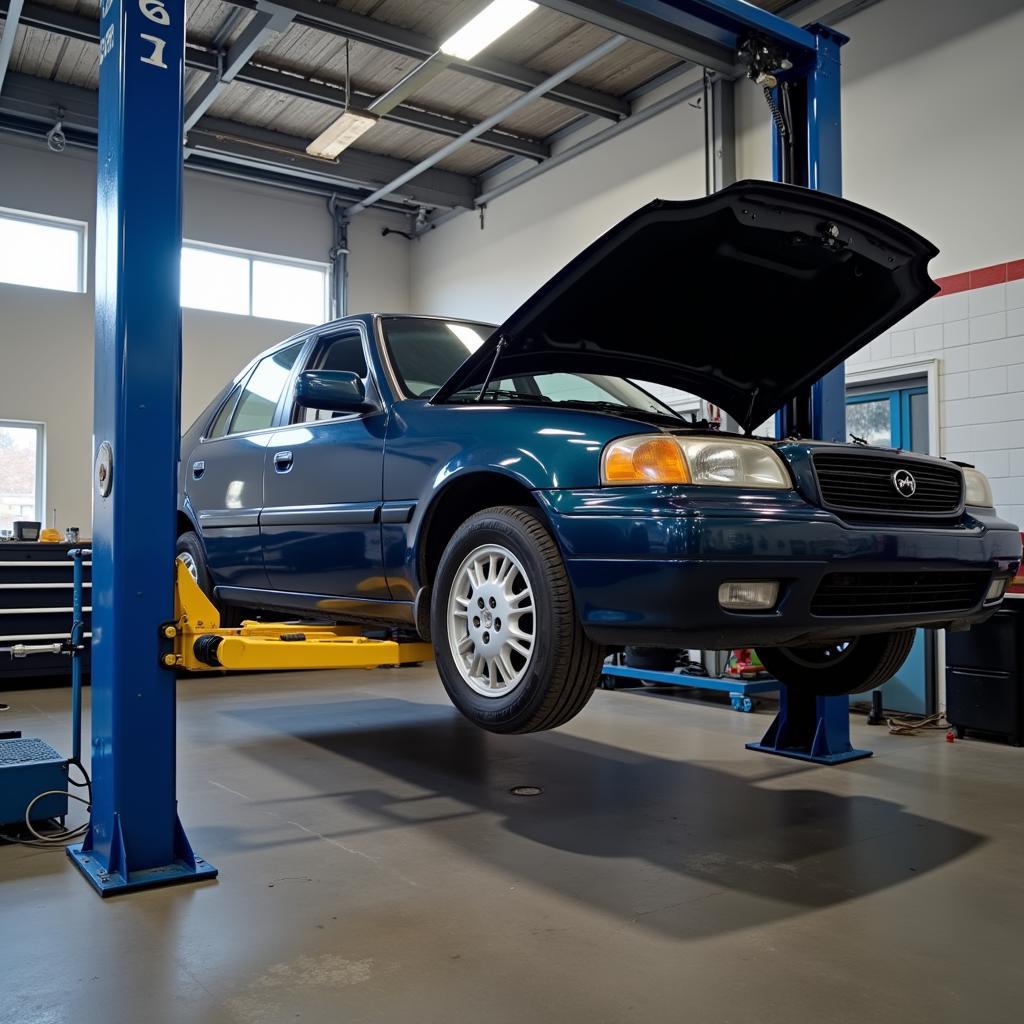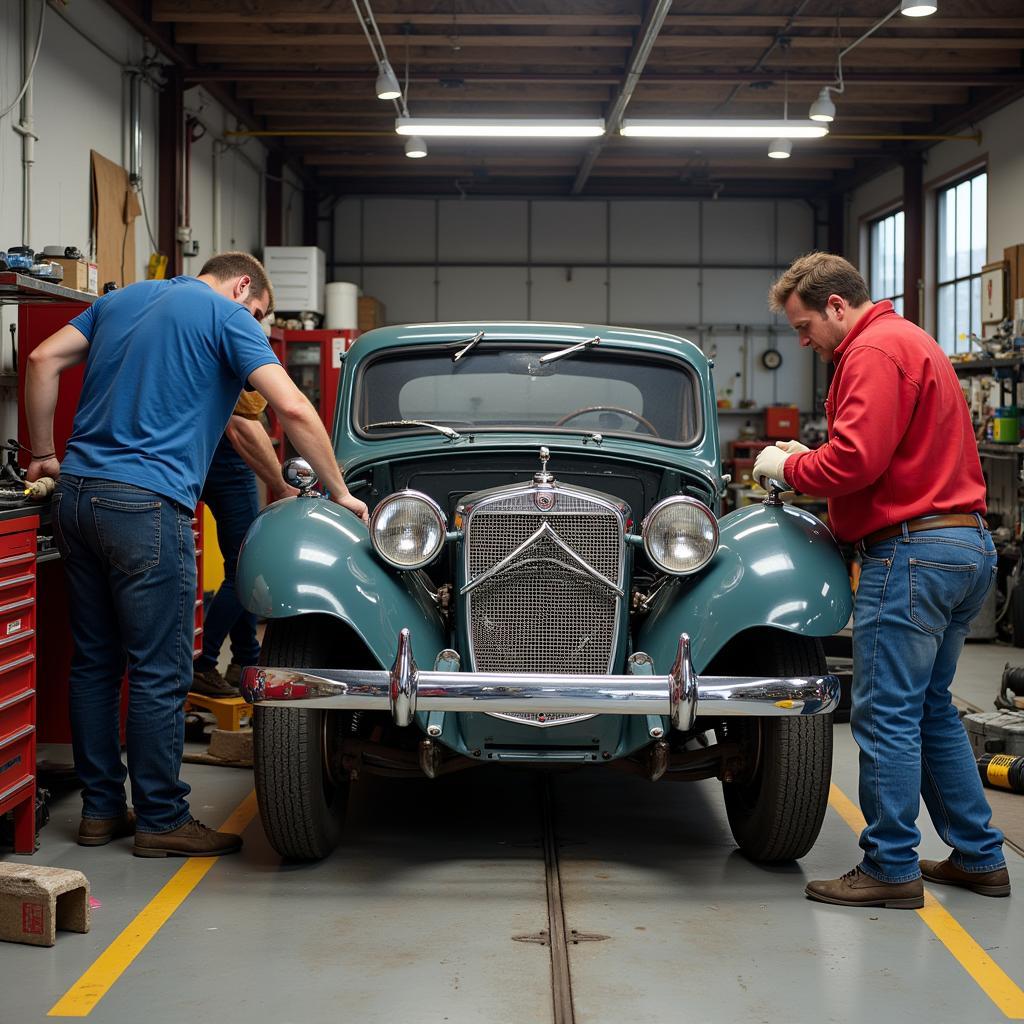After a car accident, even a seemingly minor one, suspension problems can often arise. These issues can range from subtle changes in handling to significant drivability concerns. Understanding the potential car suspension problems after an accident and how to address them is crucial for both safety and maintaining your vehicle’s performance. This article will guide you through the common suspension problems that can occur post-accident, how to identify them, and the steps you can take to get your car back in top shape.
After even a minor fender bender, your car’s suspension can be significantly affected. It’s essential to have it checked out, as unseen damage can compromise your safety. You might be interested in learning about how a car pulling another car can also cause problems. Check out our article on car pulling other car problem.
Common Car Suspension Problems After an Accident
Several key components of your suspension system can be damaged in a collision. These include:
- Control Arms: These crucial components connect the wheels to the frame and allow for steering and suspension movement. Damaged control arms can lead to misalignment, uneven tire wear, and a wobbly feeling while driving.
- Struts and Shocks: These absorb impacts and vibrations, providing a smooth ride. Damage can result in a bouncy ride, excessive body roll, and reduced handling.
- Springs: Springs support the weight of the vehicle and help maintain ride height. Damaged springs can cause the car to sit unevenly or sag.
- Tie Rods: These connect the steering rack to the wheels, allowing you to steer. Damaged tie rods can cause wandering steering and difficulty controlling the car.
- Sway Bars: These help prevent excessive body roll during turns. Damage can lead to instability and a feeling of the car leaning too much.
Identifying Suspension Problems
How can you tell if your suspension has been affected by an accident? Here are some key signs:
- Pulling or Wandering: Does your car pull to one side even when driving on a straight road? This could indicate damage to the tie rods, control arms, or even the steering rack.
- Uneven Tire Wear: Look for excessive wear on the inside or outside edge of your tires. This is a common symptom of misalignment, often caused by damaged suspension components.
- Noises: Unusual noises, such as clunking, banging, or squeaking, especially when going over bumps or turning, can point to suspension issues.
- Vibrations: Excessive vibrations felt through the steering wheel or the car’s body can be another sign of suspension problems.
- Sagging or Uneven Ride Height: If one corner of the car sits lower than the others, it’s likely a sign of a damaged spring or strut.
If you notice any of these signs, it’s crucial to have your car inspected by a qualified mechanic as soon as possible. Ignoring these issues can lead to further damage and compromise your safety.
What to Do if You Suspect Suspension Problems
If you suspect suspension problems after an accident, the first step is to have a thorough inspection performed by a qualified mechanic. They will be able to identify the specific components that are damaged and recommend the necessary repairs.
A professional inspection will typically involve:
- Visual Inspection: The mechanic will visually inspect the suspension components for any signs of damage, such as bends, cracks, or leaks.
- Steering and Suspension Check: They will check the steering and suspension components for play, looseness, and proper operation.
- Alignment Check: An alignment check will determine if the wheels are properly aligned. Misalignment can be a symptom of damaged suspension components.
Don’t forget that chassis problems can also contribute to suspension issues. Read more about the car chassis problem for further information.
Repairing Suspension Damage
Depending on the extent of the damage, repairs may involve replacing damaged components such as control arms, struts, shocks, springs, or tie rods. In some cases, it may also be necessary to repair or replace the steering rack.
Always ensure that repairs are carried out by qualified professionals using high-quality parts. This is crucial for ensuring the safety and proper functioning of your vehicle’s suspension system. After any suspension repairs, it’s essential to have a wheel alignment performed to ensure proper handling and tire wear. Addressing suspension problems promptly can prevent further damage and ensure your car remains safe and enjoyable to drive.
“After an accident, many drivers focus solely on the visible damage. However, overlooking suspension issues can have serious consequences down the road,” advises John Smith, a seasoned automotive engineer with over 20 years of experience. “A comprehensive inspection is essential for identifying hidden damage and ensuring the vehicle’s safety and performance.”
Conclusion
Car suspension problems after an accident can range from minor annoyances to serious safety hazards. By understanding the common issues, knowing how to identify them, and taking prompt action, you can ensure your car is safe and performing optimally. Don’t delay getting your car checked after any accident, no matter how minor it seems.
Remember to check out our other helpful resources on suspension cars problem and what can cause car alignment problems. You may also want to learn about addressing car rear alignment problem.
For any further assistance or questions about car suspension problems after an accident, feel free to connect with AutoTipPro at +1 (641) 206-8880 or visit our office at 500 N St Mary’s St, San Antonio, TX 78205, United States.
 Car Undergoing Alignment Check
Car Undergoing Alignment Check
FAQ
-
How soon after an accident should I have my suspension checked? As soon as possible. Even minor accidents can cause hidden damage.
-
Can I drive my car with suspension damage? It depends on the severity of the damage. Minor issues might be tolerable for a short time, but significant problems can make the car unsafe to drive.
-
How much does it cost to repair suspension damage? The cost depends on the extent of the damage and the specific components that need to be replaced.
-
Will my insurance cover suspension repairs after an accident? In most cases, yes, if the accident wasn’t your fault. Check with your insurance provider for details.
-
How can I prevent suspension damage in an accident? Safe driving practices are the best prevention. Maintaining a safe following distance and being aware of your surroundings can help avoid accidents.
-
What are the long-term effects of driving with a damaged suspension? Continued driving with a damaged suspension can lead to further damage to other components, including tires, steering system, and even the frame.
-
Can I repair my suspension myself? Unless you have significant mechanical experience, it’s best to leave suspension repairs to qualified professionals. Improper repairs can compromise your safety.





Leave a Reply